On our last day staying in Galway, the Other Half and I rented a car and daytripped to the Cliffs of Moher and the Burren. Both are located along the western, Atlantic coast of Ireland. After visiting the Cliffs , we made our way to The Burren Centre in Kilfenora, Co. Clare. The centre had a short film and small exhibit explaining the formation and history of the Burren, about 250 square kilometers of limestone karst landscape. However, I was disappointed when the Burren walk I had been told would take place was in fact not going to happen because it was off-season hours.
After a half hour or so of trying to locate the entrance of the Burren National Park to attempt a hike on our own, we gave up. This was one of the areas I really wanted to see, having looked forward to it since we planned the trip. Frustrated, we began the trip back to Galway via the scenic, Atlantic coastline. As we drove northwest, we noticed a change in the landscape. More and more limestone was appearing around us with just hints of plant life.
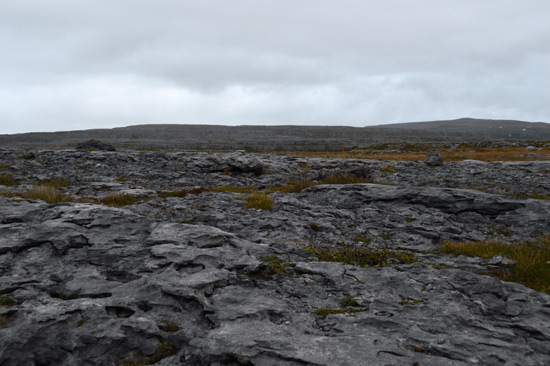
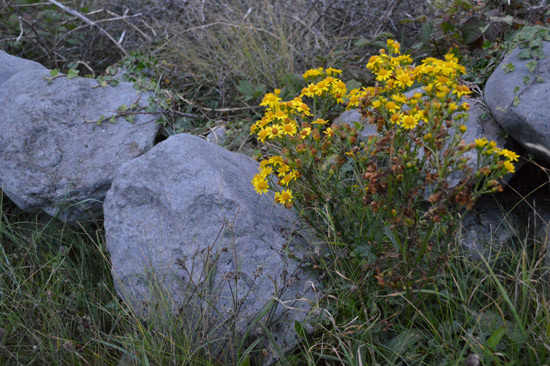 And soon we found ourselves in the Burren. We pulled the car off the road and jumped out to explore. It was utterly surreal. I’ve never seen a landscape like this before.
And soon we found ourselves in the Burren. We pulled the car off the road and jumped out to explore. It was utterly surreal. I’ve never seen a landscape like this before.
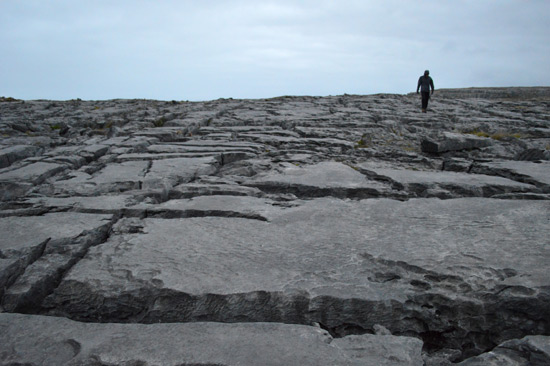 The Burren first existed as a sea floor over 335 million years ago. Ice, ocean, and plate movements began altering the area to its present form. We often came across rocks and boulders left behind by glaciers.
The Burren first existed as a sea floor over 335 million years ago. Ice, ocean, and plate movements began altering the area to its present form. We often came across rocks and boulders left behind by glaciers.
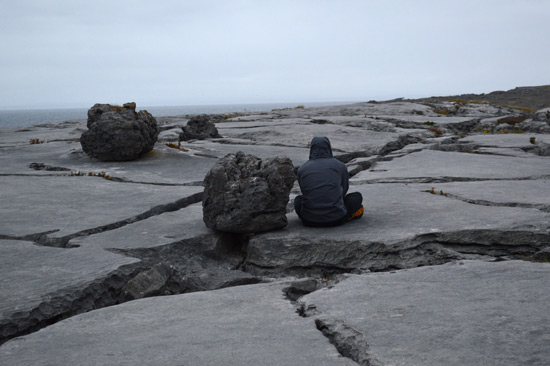 Then we began to notice traces of life among the cracks.
Then we began to notice traces of life among the cracks.
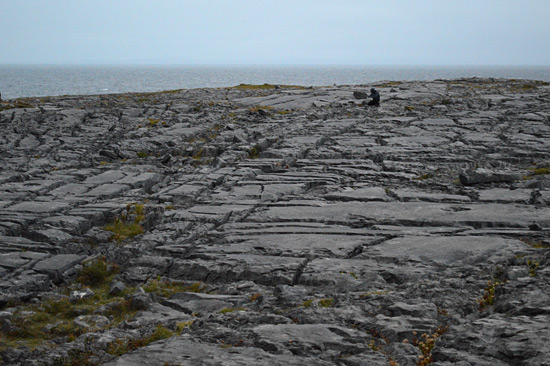 This was the reason I wanted to visit this special area of the country. Even though the Burren only covers about 1% of Ireland, “over 70% of Ireland’s 900 native plant species are found here.” The crevices of the landscape act as seed beds for a diversity of plants, many of which would never grow together in the same habitat.
This was the reason I wanted to visit this special area of the country. Even though the Burren only covers about 1% of Ireland, “over 70% of Ireland’s 900 native plant species are found here.” The crevices of the landscape act as seed beds for a diversity of plants, many of which would never grow together in the same habitat.
 The national park website describes the plant diversity within the one ecosystem best by saying “Arctic-alpine plants living side by side with Mediterranean plants, calcicole (lime loving) and calcifuge (acid loving) plants growing adjacent to one another and woodland plants growing out in the open with not a tree nearby to provide shade from the sun. Also found here are certain species which although rare elsewhere are abundant in the Burren. Even more amazingly they all survive in a land that appears to be composed entirely of rock.”
The national park website describes the plant diversity within the one ecosystem best by saying “Arctic-alpine plants living side by side with Mediterranean plants, calcicole (lime loving) and calcifuge (acid loving) plants growing adjacent to one another and woodland plants growing out in the open with not a tree nearby to provide shade from the sun. Also found here are certain species which although rare elsewhere are abundant in the Burren. Even more amazingly they all survive in a land that appears to be composed entirely of rock.”
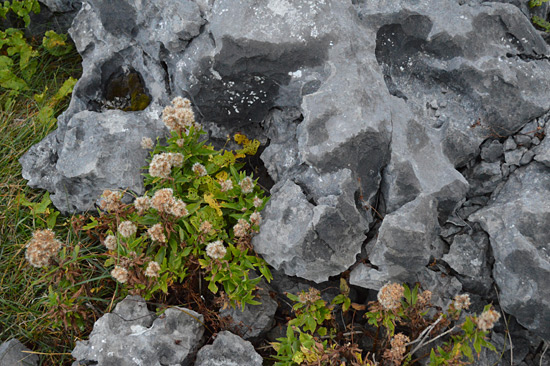
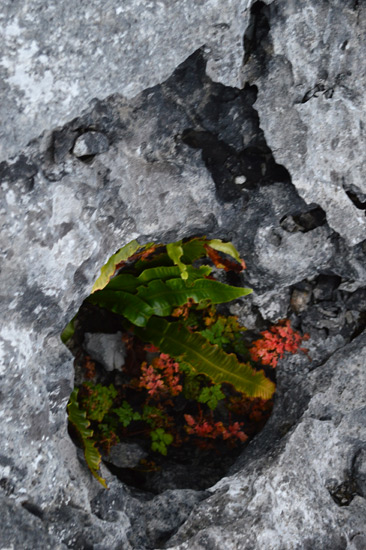
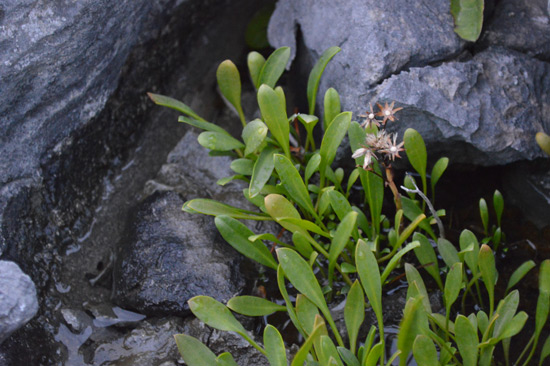
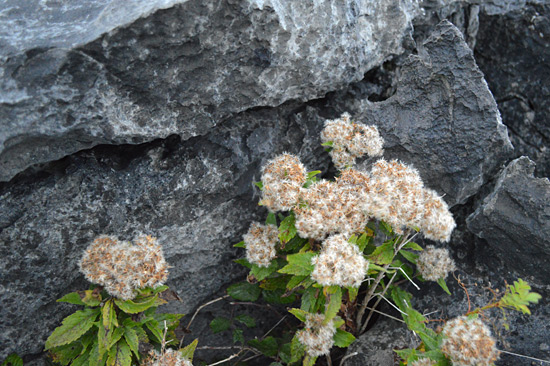 Not unlike other growing areas in Ireland, the Gulf Stream plays a large part in creating this ecosystem. In addition, “soft rain, relative absence of frost and the carboniferous bedding of the plants” round out the equation. I would love to visit this area again during the summer months to see all the wildflowers in bloom.
Not unlike other growing areas in Ireland, the Gulf Stream plays a large part in creating this ecosystem. In addition, “soft rain, relative absence of frost and the carboniferous bedding of the plants” round out the equation. I would love to visit this area again during the summer months to see all the wildflowers in bloom.
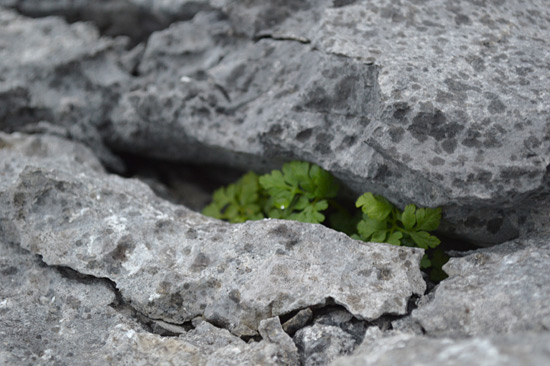
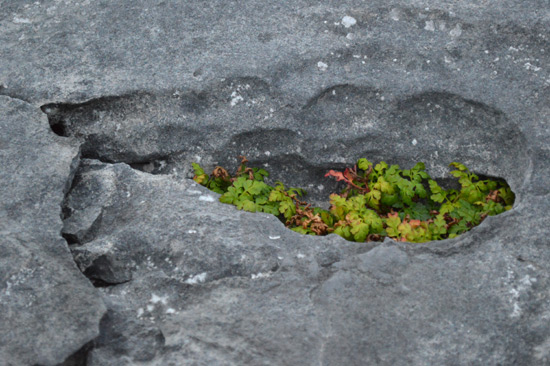
Stefanie, I don’t know how you continue to make each entry as interesting or even more interesting than the previous ones. I truly LOVE your journal! Thanks for sharing it.
Thank you for your kind words, Jan. I’m so glad you are enjoying it!